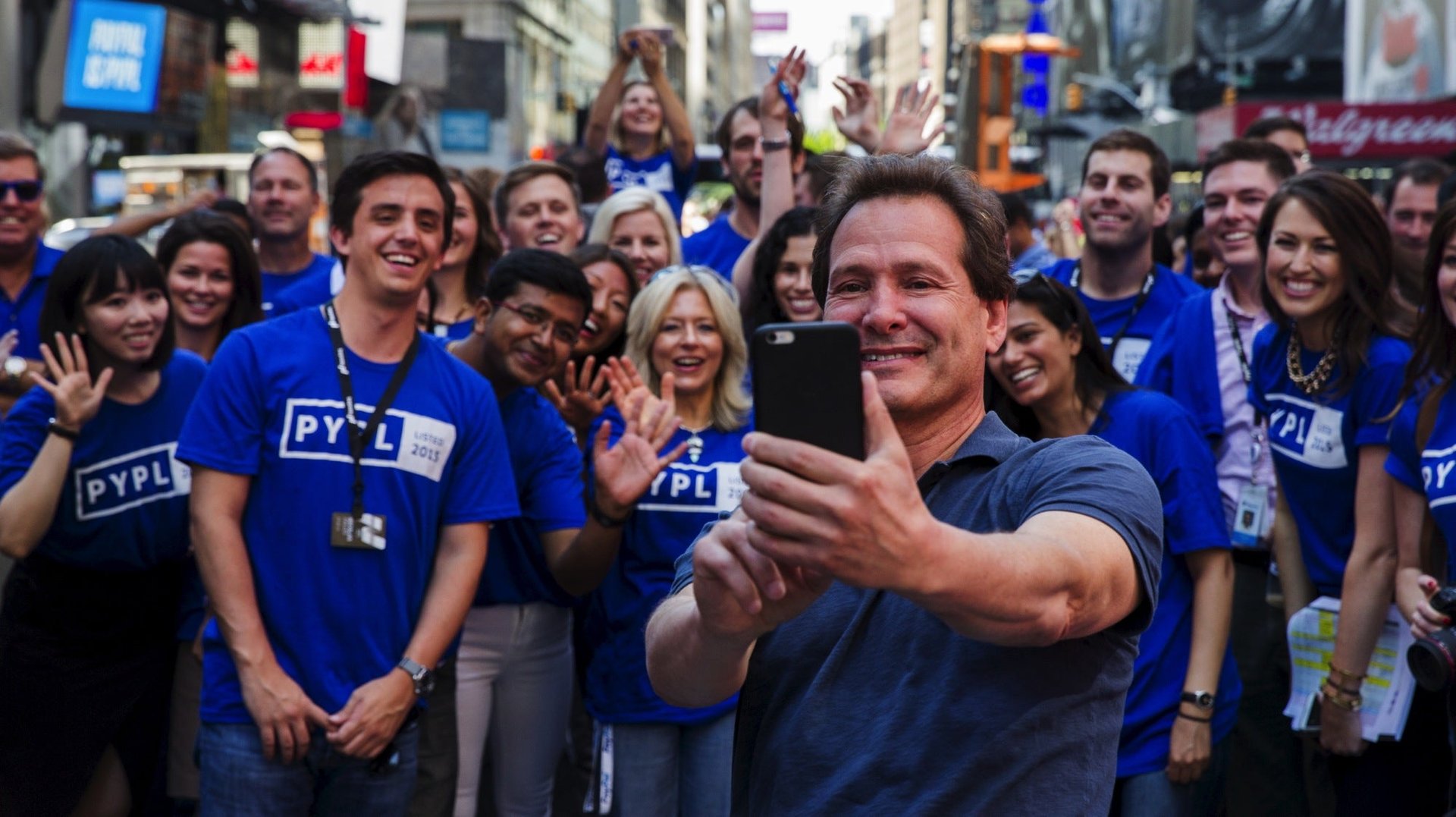PayPal once worried no one would buy stuff online
Flush with cash and primed for growth, PayPal today split off from eBay to become an independent company. Its shares jumped 11% at the start of the highly-anticipated debut. But back in 2001, the first time PayPal listed its shares on the stock market, few could have predicted that its business would be such a success.


Flush with cash and primed for growth, PayPal today split off from eBay to become an independent company. Its shares jumped 11% at the start of the highly-anticipated debut. But back in 2001, the first time PayPal listed its shares on the stock market, few could have predicted that its business would be such a success.
“We cannot assure you that the relatively new market for online payment mechanisms will remain viable,” PayPal warned in its initial filing. “There are currently few laws or regulations that apply specifically to the sale of goods and services on the Internet.”
IPO filings are, of course, cautious by nature: They are obliged to list every single reason a business could fail. So it’s hard to read into this how confident or nervous PayPal’s founders really were. But even they couldn’t have guessed at how the world would look today. Online sales now account for about 7% of all retail sales in the US, and they are dominant in entire categories like books, electronics, toys, and baby supplies.
Today, it’s become second nature for most people to pay for at least some things online. Younger consumers are even eager to share information about who they are paying and what they are paying for on the public, social news feed featured on PayPal’s mobile-payments app, Venmo. Nearly every global business has a website and needs to be able to take payment online.
Combing through the rest of the 2001 filing provides a snapshot of what the world looked like 15 years ago and just how much some things have changed—and others haven’t.
At the time, PayPal had just transformed itself from an internet banking operation into a payments company. Customers had PayPal ATM cards and earned interest in their PayPal accounts. The word “smartphone” didn’t exist; eBay and Amazon were just starting to take off; and paper checks represented the most common way of paying for stuff. (For some perspective, checks make up just 3.6% of transactions today in the US.)
Back then, nearly 70% of the dollars paid via PayPal were spent on eBay auctions. The use of PayPal spread rapidly because every time a PayPal user wanted to pay someone who wasn’t on PayPal, the recipient had to sign up for a PayPal account to get the money.
According to the filing:
If our ability to process payments for purchases made on online auction websites, particularly eBay, became impaired, or if these online auction sites took additional steps to integrate their payment services, our business could suffer.
That was certainly the case then. But over the years, the online auction business that propelled PayPal across the world would dwindle as sellers migrated to Amazon, Etsy, Alibaba, and another avenues to sell their wares.
Fewer than a quarter of PayPal’s transactions now come through eBay and more than two-thirds of the 100 largest online retailers in the US take PayPal. This year, PayPal overtook eBay’s marketplace sales. And today, Paypal’s market value of $46.6 billion surpasses that of eBay’s, which was estimated at $34 billion.

Still, some of the same tenets mentioned in PayPal’s initial 2001 filing could be plucked out and used verbatim today.
For one, security and privacy remain PayPal’s most important asset. Data breaches and fraud, which have plagued major retailers and websites, are a big threat to its business. “Breaches of our customers’ privacy and our security measures… could diminish severely consumer confidence in and use of our product,” the company wrote in 2001.
And competition remains fierce. Many of the challengers PayPal listed in 2001 still exist as corporate entities, including eBay, Wells Fargo, Yahoo, Citigroup, Western Union, and the US Postal Service. But most would not be counted as true PayPal competitors today. It now has a whole new set of rivals, in the form of tech giants like Apple, Google and Facebook, and startups like Square and Stripe.
Nonetheless, the overall description of PayPal’s competitive landscape in the 2001 filing remains true:
The market for our product is emerging, intensely competitive and characterized by rapid technological change. We compete with existing payment methods and other companies… with longer operating histories, significantly greater financial, technical, marketing, customer service and other resources, greater name recognition or a larger base of customers in affiliated businesses than we do.
While the world has changed a lot in the past 15 years, the central business challenge remains the same for PayPal: How to get more customers to use it to pay for things.
To increase its chances this time around, PayPal has been on an acquisition spree. Snapping up companies like international money-transfer business Xoom, digital payments company Paydiant, and Venmo will help it compete in the never-ending arms race for payments. But only time will tell how PayPal does in its new incarnation as a stand-alone company.